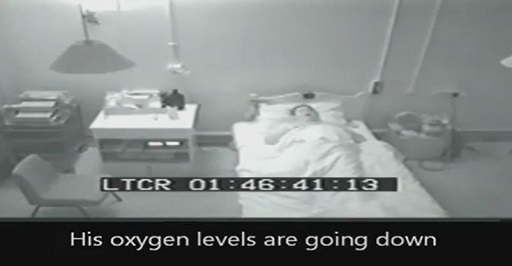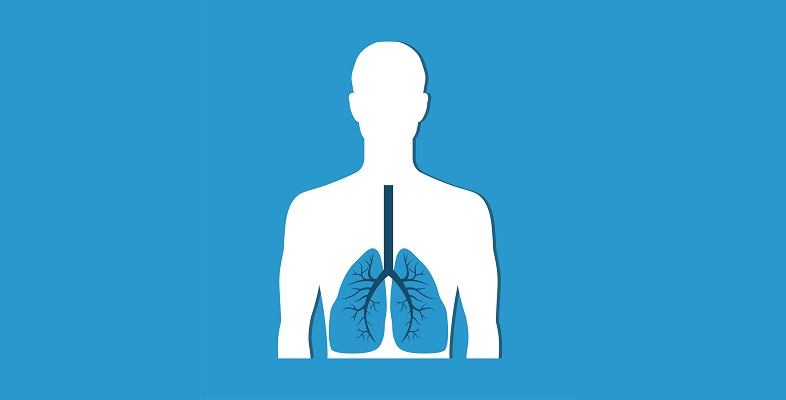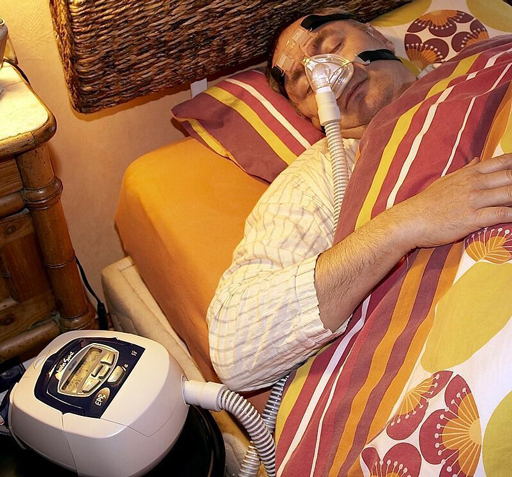6.4 Sleep apnoea
Sleep apnoea occurs when airflow is disrupted during sleep. It can arise due to abnormalities in the medullary respiratory centres that result in a failure to regulate the contraction of the diaphragm and intercostal muscles (called central apnoea).
However, the most common form of sleep apnoea is caused by an obstruction of the pharynx (termed obstructive sleep apnoea) by the muscles and soft tissues in the throat, which relax during sleep. A reduction in airflow (due to increased airway resistance) is termed hypopnoea, whereas a complete blockage of airflow (interruption for more than 10 seconds) is called apnoea. Symptoms of obstructive sleep apnoea include snoring (caused by the vibration of the soft tissues in the pharynx), struggling to breathe (or cessation of breathing) during sleep, and fatigue or falling asleep in the daytime. An instance of apnoea is shown in Video 14 below.

Transcript: Video 14 Obstructive sleep apnoea.
Some people may be completely unaware that they stop breathing at night and therefore are only conscious of feeling very tired despite having slept ‘well’. The fatigue occurs because during the apnoea, the response of the respiratory neurons to the rising PCO2 of the blood causes the brain to come out of REM sleep. In people with severe obstructive sleep apnoea, such interruptions can occur more than 30 times in an hour, leading to very poor quality sleep.
Treatments for sleep apnoea typically involve lifestyle changes that result in physiological changes (e.g. weight loss, cessation of smoking), mandibular advancement mouthpiece devices that keep the jaw open, and wearing continuous positive airway pressure (CPAP) masks that push pressurised air into the airway (Figure 18).

